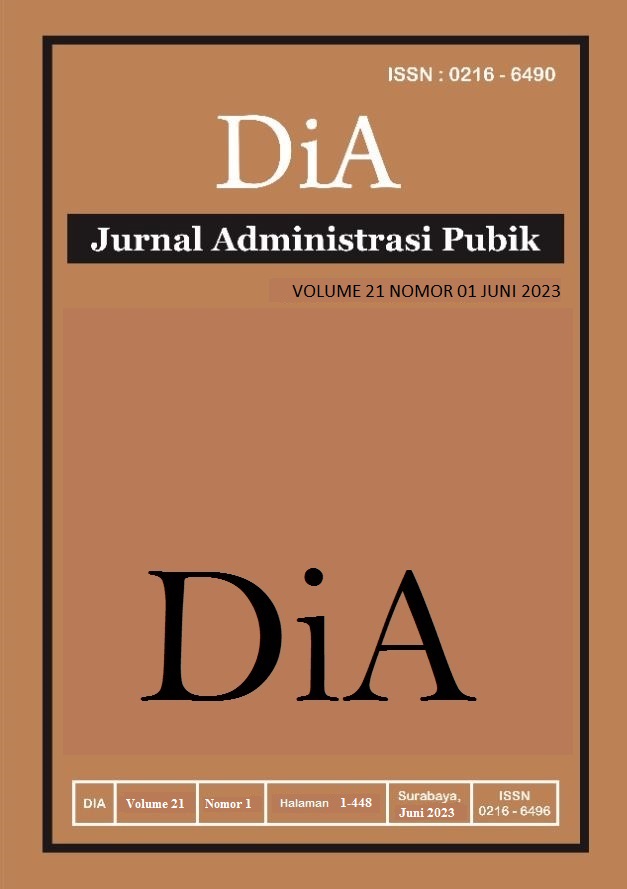REVOCATION OF VAT EXEMPTION FOR ELECTRICITY AND WATER AND ITS IMPACT ANALYSIS
DOI:
https://doi.org/10.30996/dia.v21i01.8084Keywords:
VAT, Microsimulation, Retribution, Poverty, InequalityAbstract
Covid-19 pandemic has brought an impact on global economy which turn down the ranked of Indonesia from a country with upper middle income to lower middle income. In response to this matter, the Indonesian government has been issued several policies to increase the acceleration in economic and support economic recovery in order to optimize the state revenues which can be done by revoking of VAT exemptions on electricity and water. This research aims to explore further regarding the effect of poverty and inequality which arise from this revoking policy. The analysis conducted by microsimulation model method to measure poverty and inequality based on individual/household gains or losses caused by taxes policy. Main data obtained from national socio-economic survey data which submitted by BPS. Broadly speaking, these simulation results are indicates that this policy had slightly increases poverty rate, but did not affect on inequality. Through this research it was found an alternative way to compensate with assumption that this costs are source of additional revenue obtained from this imposition of normal VAT rates on electricity and water for households, so its distribution through cash transfers could be an effective way to fixes the poverty levels and inequality.
Downloads
References
Alm, J. (2019). Can Indonesia Reform Its Tax System? Problems and Options Can Indonesia Reform Its Tax System? Problems and Options. Tulane Economics Working Paper Series, 2019(October).
Amlani, J. (2019). Can a flat-rate VAT promote redistribution ? Assessing the impact of abolishing preferential VAT rates on Tunisia ’ s poor. The Public Sphere: Journal of Public Policy, 8(1).
Badan Kebijakan Fiskal. (2021). Laporan Belanja Perpajakan. https://fiskal.kemenkeu.go.id/files/ter/file/1640354845_laporan_belanja_perpajakan_2020_ebook.pdf
Ballas D., Rossiter,., Thomas, B., Clarke, G., & Dorling, D. et al. (2005). Geography matters: Simulating the local impacts of national social policies. 369–380. https://doi.org/10.1145/2535372.2535395
Ballas, D., Clarke, G., & Turton, I. (1999). Exploring microsimulation methodologies for the estimation of household attributes. 4th International Conference on GeoComputationeb, 1–46.
Benzarti, Y., Carloni, D., Harju, J., & Kosonen, T. (2020). What goes up may not come down: Asymmetric incidence of value-added taxes. Journal of Political Economy, 128(12), 4438–4474. https://doi.org/10.1086/710558
BKF. (2021). Reformasi Perpajakan untuk Penciptaan Keadilan , Peningkatan Kepatuhan , dan Penguatan Fiskal. 2021–2023.
Carbonnier, C. (2007). Who pays sales taxes? Evidence from French VAT reforms, 1987-1999. Journal of Public Economics, 91(5–6), 1219–1229. https://doi.org/10.1016/j.jpubeco.2006.12.004
Charlet, A., & Owens, J. (2013). An international perspective. An Introduction to Human Resource Management, 59(12), 435–466. https://doi.org/10.4324/9780203759455-18
Cirillo, C., Imperioli, L., & Manzo, M. (2021). The Value Added Tax Simulation Model :VATSIM-DF (II) (No. wp2021-12). March.
Ebrill, L., Keen, M., & Summers, V. (2001). The Modern VAT. In The Modern VAT. https://doi.org/10.5089/9781589060265.071
Gaarder, I. (2019). Incidence and distributional effects of value added taxes. Economic Journal, 129(618), 853–876. https://doi.org/10.1111/ecoj.12576
Gcabo, R., Moche, B., Steyn, W., Moahlodi, B., Pirttilä, J., Nobel, M., Wright, G., Barnes, H., & Masekesa, F. (2019). Modelling value-added tax (VAT) in South Africa: Assessing the distributional impact of the recent increase in the VAT rate and options for redress through the benefits system. WIDER Working Paper, 2019(March).
Gerard, F., & Naritomi, J. (2018). Value Added Tax in developing countries : Lessons from recent research VAT systems incentivise accurate reporting on B2B transactions , but evasion and administration challenges still exist . International Growth Centre, May.
Jellema, J., Wai-Poi, M., & Afkar, R. (2017). The Distributional Impact of Fiscal Policy in Indonesia. The Distributional Impact of Taxes and Transfers: Evidence From Eight Developing Countries. https://doi.org/https://doi.org/10.1596/978-1-4648-1091-6_ch5
Keen, M. (2014). Targeting, cascading and indirect tax design. Indian Growth and Development Review, 7(2), 181–201. https://doi.org/10.1108/IGDR-02-2013-0009
Keen, M., & Lockwood, B. (2010). The value added tax: Its causes and consequences. Journal of Development Economics, 92(2), 138–151. https://doi.org/10.1016/j.jdeveco.2009.01.012
LKPP. (2022). Laporan Keuangan Pemerintah Pusat Tahun 2021 (Audited). https://djpb.kemenkeu.go.id/portal/images/file_artikel/file_pdf/lkpp/LKPP_audited_2021_.pdf
Lustig, N. (2018). Commitment to Equity Handbook. In Brookings Institution Press (Vol. 208, Issue 8).
Maskaeva, A., Mmasa, J., Lema, N., & Msafiri, M. (2019). The Impact of Fiscal Policy on Income Distribution in Tanzania: A Computable General Equilibrium Analysis. SSRN Electronic Journal, January. https://doi.org/10.2139/ssrn.3405460
Resosudarmo, B. P. (2021). Regional Perspectives of COVID -19 in Indonesia. IRSA Book Series on Regional Development No. 19.
Spencer, M. H., & Amos, O. M. (1954). Contemporary economics (8th ed.). Worth Publishers.
Sulfan, S. (2021). Kinerja Ppn Di Indonesia Tahun 2011-2020. JURNAL PAJAK INDONESIA (Indonesian Tax Review), 5(2), 206–216. https://doi.org/10.31092/jpi.v5i2.1414
Tanzi, V., & Zee, H. H. (2000). Tanzi Taxation in emerging markets.pdf. In National Tax Journal (Vol. 35, Issue 1).
Thomas, A. (2022). Reassessing the regressivity of the VAT. Fiscal Studies, 43(1), 23–38. https://doi.org/10.1111/1475-5890.12290
Tingkes, I. N., & Widnyani, I. A. P. S. (2021). Regional Investment Financial Report Analysis in Badung Regency. DiA: Jurnal Administrasi Publik, 19(2), 70–80. https://doi.org/https://doi.org/10.30996/dia.v19i2.5494
Toye, J. (2000). Fiscal crisis and fiscal reform in developing countries. Cambridge Journal of Economics, 24(1), 21–44. https://doi.org/10.1093/cje/24.1.21
Warwick, R., Harris, T., Phillips, D., Goldman, M., Jellema, J., Inchauste, G., & Goraus-Tańska, K. (2022). The redistributive power of cash transfers vs VAT exemptions: A multi-country study. World Development, 151. https://doi.org/10.1016/j.worlddev.2021.105742
World Bank. (2022). Ikhtisar: Bank Dunia di Indonesia. World Bank. https://www.worldbank.org/in/country/indonesia/overview
Younger, S. D., Myamba, F., & Mdadila, K. (2016). Fiscal Incidence in Tanzania. African Development Review, 28(3), 264–276. https://doi.org/10.1111/1467-8268.12204
Downloads
Published
How to Cite
Issue
Section
License
The DiA journal allows authors to retain the copyright of their papers without limitation. Authors may grant publishers non-exclusive publishing rights to publish articles. Granting first publishing rights to publishers also qualifies as unlimited copyright (because there are no restrictions imposed by publishers on author copyright).







